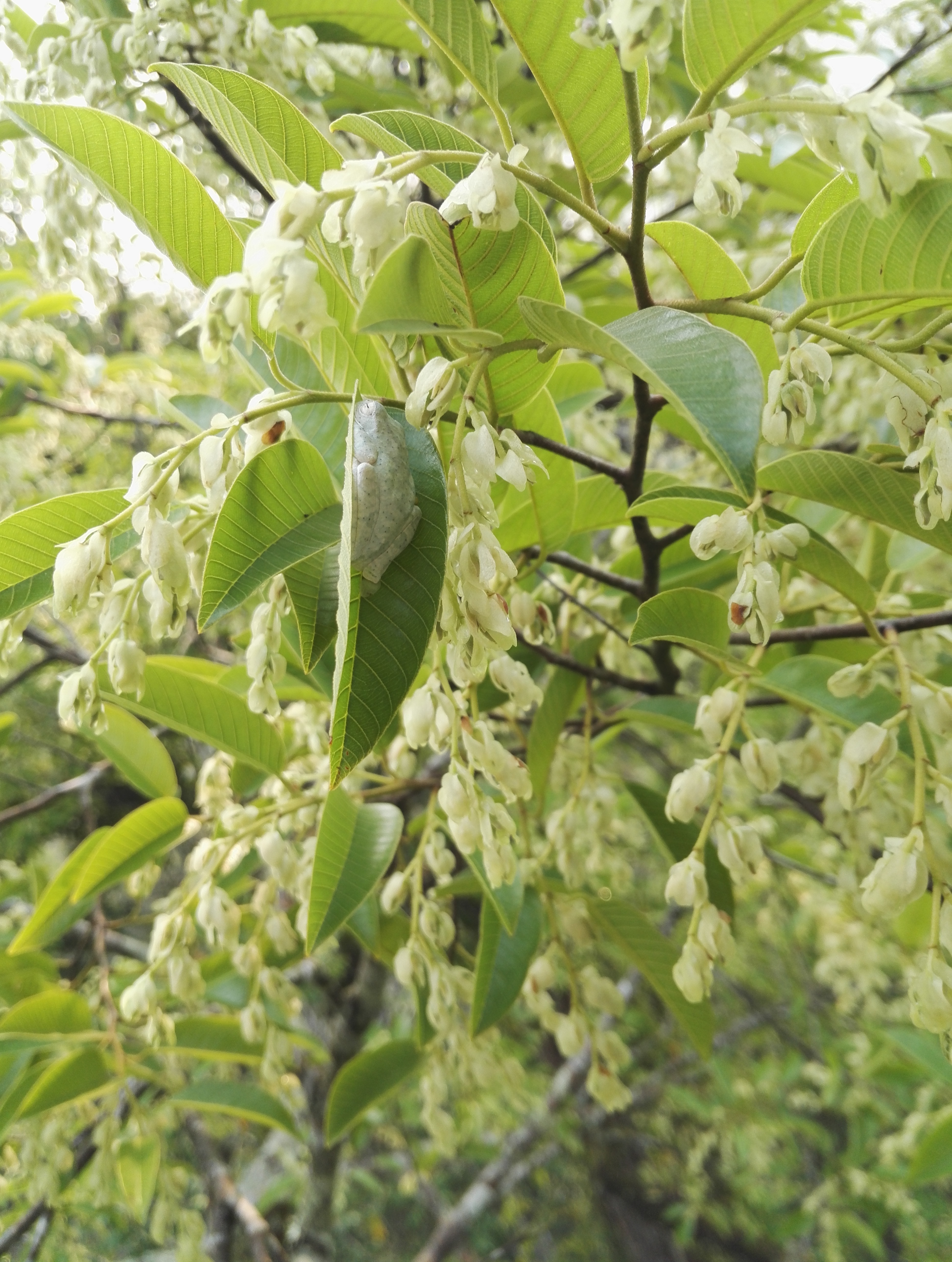These treefrogs may challenge your knowledge of amphibians.
In May 2019, scientists found an Asian black-webbed treefrog (Rhacophorus kio) resting at the canopy of a 62-meter-tall Parashorea chinensis tree in Mengla area of Xishuangbanna National Nature Reserve in southwest China's Yunnan Province. Five months later, another Asian black-webbed treefrog was found on an epiphyte (Microsorum punctatum) at the crown of a smaller Parashorea chinensis tree in the same region.

The Asian black-webbed treefrog (Rhacophorus kio) rests on a canopy leaf of a flowering Parashorea chinensis tree, May 2019. /Xishuangbanna Tropical Botanical Garden, Chinese Academy of Sciences
The Asian black-webbed treefrog (Rhacophorus kio) rests on a canopy leaf of a flowering Parashorea chinensis tree, May 2019. /Xishuangbanna Tropical Botanical Garden, Chinese Academy of Sciences
The two treefrogs were observed at a height of 57.0 and 34.6 meters respectively, breaking the record of the highest arboreal frog. Previously, the highest record was made by a gray treefrog (Hyla versicolor), who was seen living in the tree canopies as high as 20.5 meters above ground in Wisconsin U.S.

The Asian black-webbed treefrog at the canopy of Parashorea chinensis, October 2019. /Xishuangbanna Tropical Botanical Garden, Chinese Academy of Sciences
The Asian black-webbed treefrog at the canopy of Parashorea chinensis, October 2019. /Xishuangbanna Tropical Botanical Garden, Chinese Academy of Sciences
It's uncommon to see frogs living at such a height, especially in such hot and dry conditions. Their appearance leaves multiple puzzles for scientists. How can these black-webbed treefrogs climb to the tree canopy? Is this region their normal habitat? How can they adapt to the hot and dry conditions at the canopy? Are there any other amphibians living at the canopy?
Scientists at Xishuangbanna Ecological Station are trying to answer these questions in the future research. The finding was recently published in Frontiers in Ecology and the Environment.
(Cover photo credit to Xishuangbanna Tropical Botanical Garden, Chinese Academy of Sciences.)
(If you want to contribute and have specific expertise, please contact us at nature@cgtn.com.)

